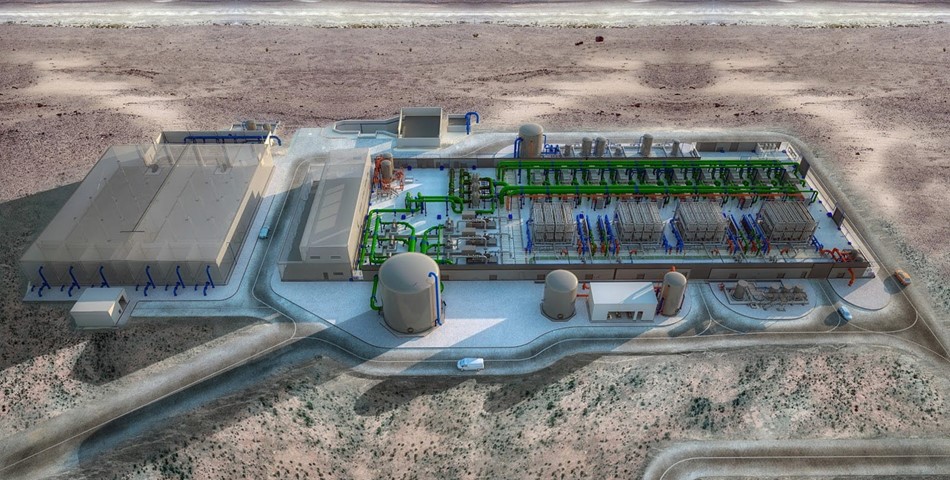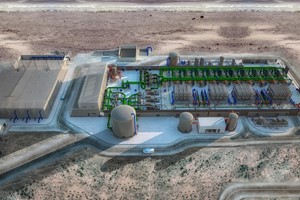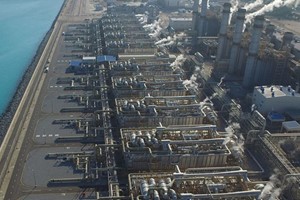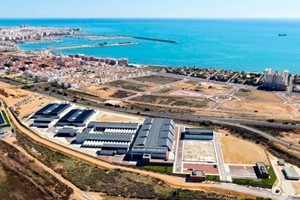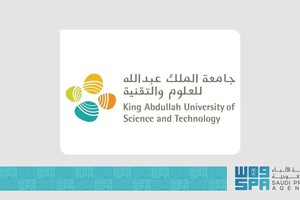Desalination can be defined as, the process of converting saline unusable water into fresh usable one, through extraction and removal of dissolved salts from available water sources in order to make it viable for human use. Desalination involves extensive filtration of relatively saline water through either distillation or membrane filtration for reclaiming usable fresh water from unusable saline, brackish as well as waste water sources. Desalination technology has evolved over the years, and the process of desalination is increasingly cost-effective and has emerged as a viable alternative means of sourcing fresh water in order to satisfy its burgeoning demand from different consumption sectors such as domestic, industrial and even to a lesser extent agriculture.
Amid the COVID-19 crisis, the global market for Desalination Technologies estimated at US$12.8 Billion in the year 2020, is projected to reach a revised size of US$22.5 Billion by 2026, growing at a CAGR of 9.8% over the analysis period. Reverse Osmosis (RO), one of the segments analyzed in the report, is projected to grow at a 11% CAGR to reach US$14.9 Billion by the end of the analysis period. After a thorough analysis of the business implications of the pandemic and its induced economic crisis, growth in the Multi-Stage Flash (MSF) segment is readjusted to a revised 9% CAGR for the next 7-year period. This segment currently accounts for a 29% share of the global Desalination Technologies market.
Global Desalination Market is projected to be US$ 32.02 Billion by 2027. Desalination is an excellent response to exogenous risks such as dependency. Remarkably, desalination proves to be reliable technology in times of drought and water scarcity globally. While in some countries, desalination is an indispensable water supply source regularly. North African Middle Eastern countries like Saudi Arabia, the UAE, Israel, Kuwait Singapore Oman and small islands like Maldives etc. are some countries where desalination is a huge business opportunity.
Every year over half the global population experiences forms of water scarcity. Besides, the water shortage also affects populated areas where supply is constrained. Further, with an increasing population, urbanization, and economic growth, water scarcity globally is projected to worsen. Hence, desalination is a good tool for water scarcity management. Desalination is a process in which the surplus salts are removed from seawater or brackish water, and making the water safer to drink. According to the publisher the Worldwide Desalination Market Size was valued at US$ 19.29 Billion in 2021.
With Evolution of Time Multi-Effect Distillation Is Becoming More Competitive at All Scales:
Multi-Stage Filtration has been the more competitive thermal technology for larger projects and Multi-Effect Distillation for smaller ones. Multi-Stage Filtration technology is highly preferred because of its lower risk and familiarity with the market, along with its application on a larger scale over a more extended period. Besides, with time's evolution, Multi-Effect Distillation is becoming more competitive at all scales.
Economies of scale favor the growth in the market for Multi-Effect Distillation and Multi-Effect Distillation advantages over Multi-Stage Filtration, such as lower energy requirements and lower capital costs, is likely to lead to more widespread adoption of Multi-Stage Filtration technology globally in the coming years.
Originally developed for the chemical industry, Multi-Effect Distillation (MED) or Multi-Effect Evaporation (MEE) is the oldest thermal desalination technology in existence. The MED technology is essentially based on the evaporation and condensation principles and revolves around progressively lowering the ambient pressure through each successive array of evaporators also referred to as effects. In the global Multi-Effect Distillation (MED) segment, USA, Canada, Japan, China and Europe will drive the 5% CAGR estimated for this segment. These regional markets accounting for a combined market size of US$439.2 Million in the year 2020 will reach a projected size of US$618.7 Million by the close of the analysis period. China will remain among the fastest growing in this cluster of regional markets. Led by countries such as Australia, India, and South Korea, the market in Asia-Pacific is forecast to reach US$250.7 Million by the year 2026, while Latin America will expand at a 5.7% CAGR through the analysis period.
Global Desalination Market will grow with a CAGR of 8.8% from 2021-2027
In recent years, conventional approaches relying on rainfall and river runoff in water-scarce areas are no longer sufficient to meet human demands. Unconventional water resources, such as desalinated water, are expected to play a crucial role in narrowing the water demand supply gap. The major factors pushing the expansion of the desalination market are dwindling of water resources under the impact of changing rainfall patterns, rising temperatures, and over-exploitation.
Nevertheless, installing desalination plants and assuring their flourishing operation is a convoluted and multifaceted process dangling on capital and operational costs, water salinity, production capacity, geographical location, socio-economic and environmental conditions.
Middle East & Africa Dominate the Global Desalination Industry
In the wake of fast population growth coupled with climate change and environmental degradation, regions like the Middle East & Africa, North America, South America, Europe, and the Asia Pacific face increasing uncertainty in providing ample, safe, and sustainable resources of potable water. As per our analysis, Middle East & Africa dominate the regional market in the Global Desalination Industry. Moreover, Middle East & Africa has opted for large-scale desalination to reduce dependence on increasingly
expensive imported water. The stable, efficient supplies of urban and industrial water that desalination provides are helping governments to manage a range of economic, social, and political risks.



